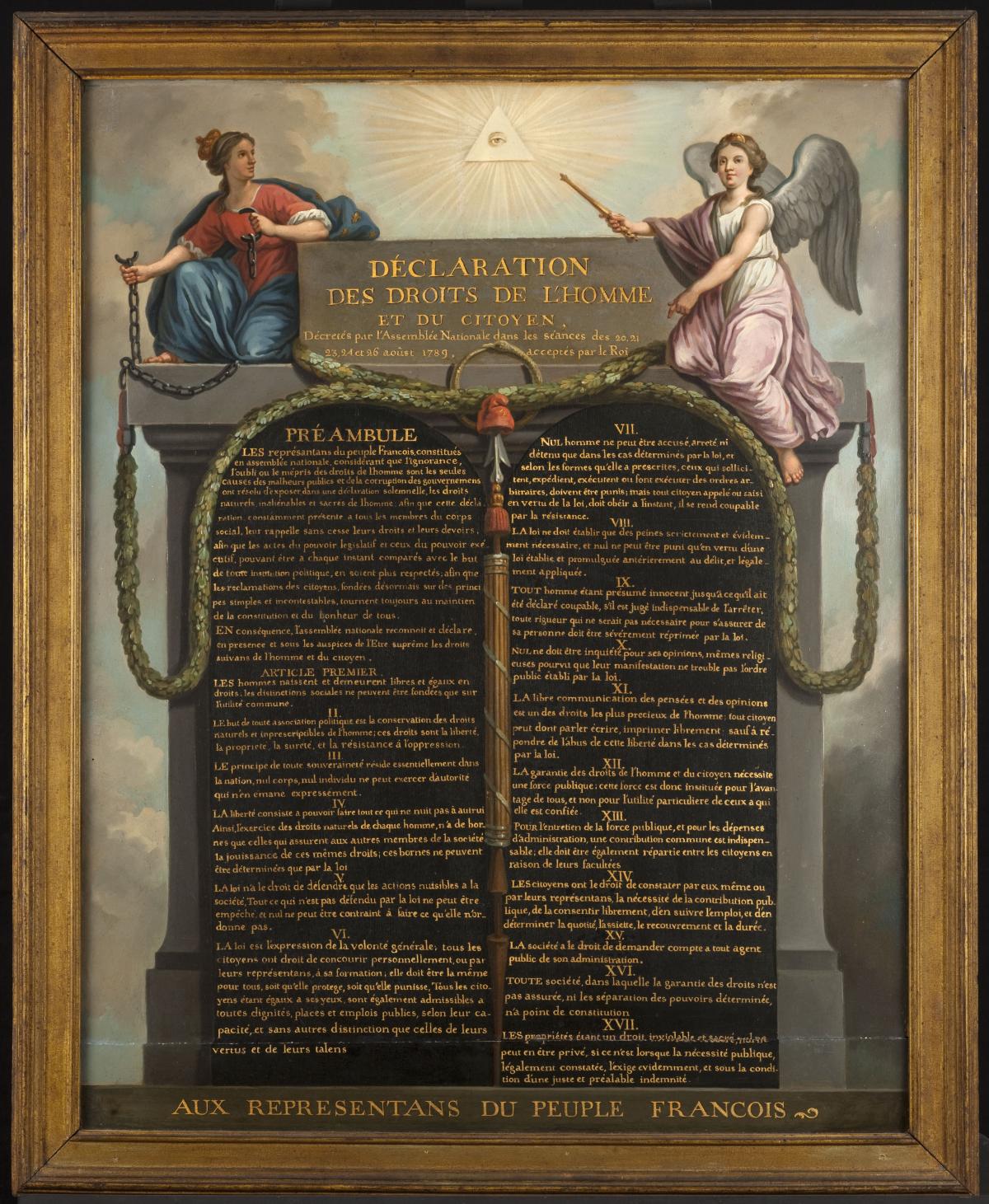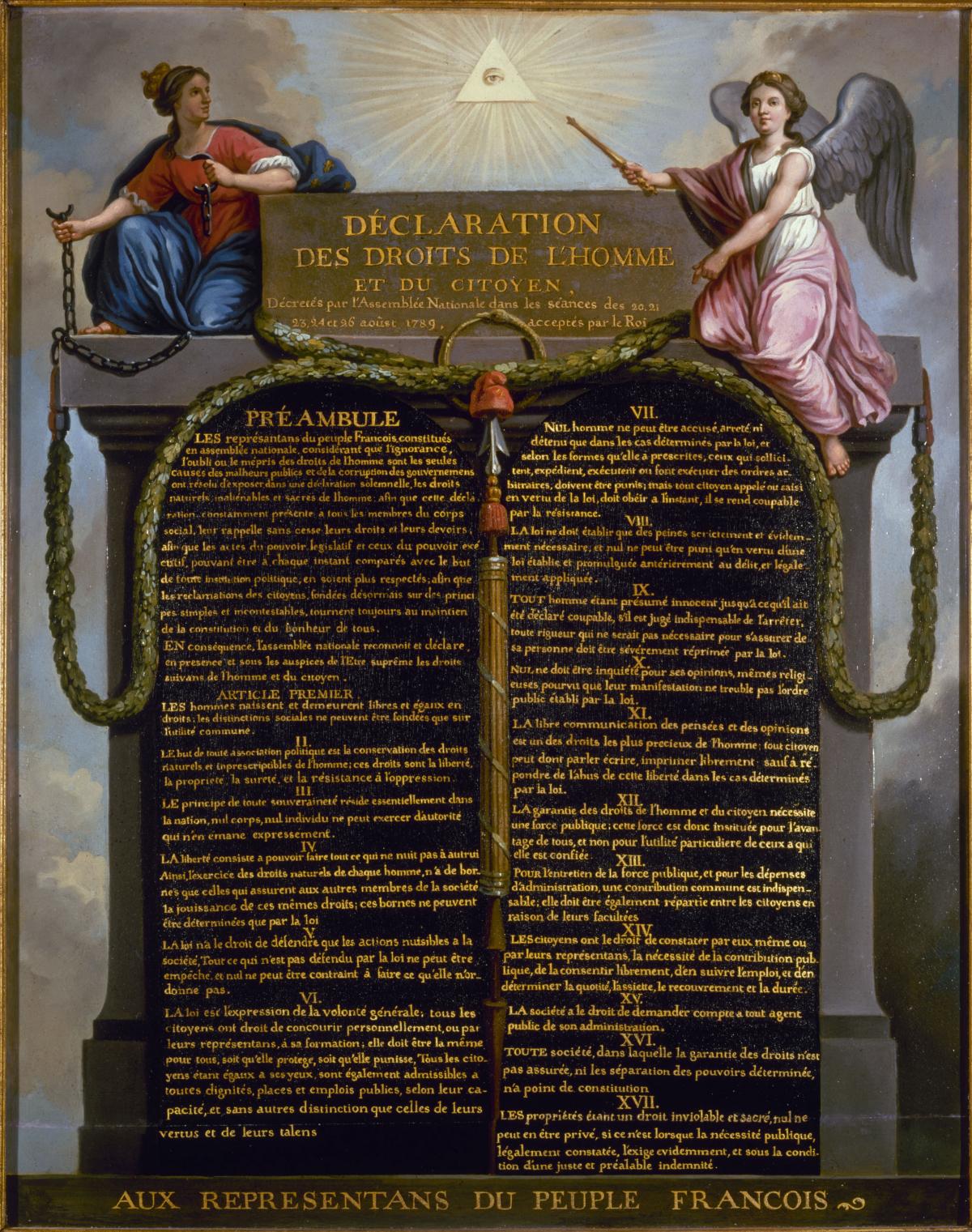Déclaration des droits de l'homme et du citoyen.
Le Barbier, Jean-Jacques-François (dit l'Aîné), né en 1738 à Rouen, décédé en 1826 à Paris
On August 26, 1789, the National Assembly approved the declaration that proclaims that the rights of man and the citizen are natural, inalienable and sacred. All men are born free and with equal rights, social distinctions can be established only according to merit, and security and property are sacred. The text lays the groundwork for a reform of the judiciary system and affirms the government’s obligation to ensure the application of laws and the defense of public affairs. In this allegorical composition, France—holding the broken chains of tyranny—and the Spirit of the Nation—holding the scepter of power—frame the preamble and the seventeen articles of the Declaration of the Rights of Man and the Citizen. These articles are depicted with the religious solemnity of the biblical Tables of the Law. They are separated by a lictor’s fasces (the symbol of union and strength), crowned with a Phrygian cap (liberty) and a serpent biting its tail (eternity), and decorated with laurels (glory). This oil painting on wood is obviously not designed to be read by everyone in a vast official room. It belonged to Georges Clemenceau before becoming part of the museum’s collections.

